Quality
Every Bosch Motorsport product has quality built-in. The same high-performance products tested in the highest levels of international motorsport are available for your car.
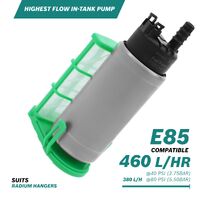
SKU: F 02U V0U 343-01 (Typically ships in <5 bus. days)
$280.50
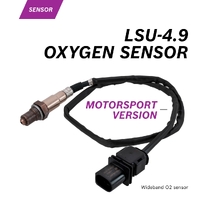
SKU: 0 258 988 001 (Typically ships in <5 bus. days)
$210.21

Choosing the right fuel pump for your project is an important decision, and can be a daunting one if you aren't up to speed on how fuel pumps work and why different options exist. In this article we will explain the main factors that will determine which fuel pump is correct for your application and dispel some of the common misconceptions about fuel pumps for your vehicle. The topics we will cover include: 1. Fuel types 2. Correct flow sizing and the impacts of under or over-sizing a fuel pump 3. Mounting considerations 4. Electrical system considerations 5. Durability 6. Fuel system accessories 1. Fuel Types The use of E85 fuel has risen in popularity in recent years due to increased availability and related product development from car manufacturers and the aftermarket. With the appropriate tuning, E85 fuel can enable increased power output via ignition advance and/or boost levels due to its knock-inhibiting properties. Sounds great, right? Well, there are two things to be aware of when you are choosing a fuel pump for use with E85 fuel. Firstly, chemical compatibility . E85 fuel is a blend of 85% Ethanol (hence the name) with 15% gasoline and other additives. Ethanol has a corrosive and destructive effect on many materials found within a vehicle's fuel system if that vehicle was not designed for ethanol-based fuels from the outset. Thus, if you want to run your car on E85 fuel, even infrequently, you must ensure your fuel pump has been specifically designed to operate with E85. A non-E85 compatible pump may work initially but as the ethanol eats away at the pump's internals it will reduce in flow and eventually fail completely. When you see a Bosch Motorsport released E85-compatible fuel pump, you can be confident that thousands of hours of testing have confirmed the durability of the pump with ethanol fuel. The second consideration when selecting a fuel pump for E85 usage is fuel volume flow . A litre of E85 has a lower energy content than a litre of gasoline and thus requires 30-40% more fuel to generate the same power output. This means you must select a pump or pumps with a corresponding higher flow rate to ensure you can supply the fuel volume required, especially at higher RPM. Failing to do so can result in limited peak power and/or engine damage. This article doesn't cover diesel fuel - keep an eye out for an upcoming guide specific to diesel vehicles. Methanol fuels are extremely corrosive and require specialised equipment, which is beyond the scope of this article. 2. Correct Flow Sizing When people discuss the 'size' of a fuel pump, they are mostly likely referring to the pump's flow rate rather than its dimensions (we'll cover physical sizing in the Fuel Pump Mounting Considerations section). High power levels necessitating a 'bigger' (higher flow) fuel pump is the primary reason people change their fuel pump, but is bigger always best? Let’s take a look. Simply put, an internal combustion engine's job is to explosively release the chemical potential energy from the mixture of fuel and air and convert it into power. Assuming a consistently efficient engine, it follows that more power will require more fuel, and at a certain point a vehicle's standard fuel pump will no longer keep up with the demands of a significantly more powerful engine. Some pumps will be advertised as '500hp' or '800hp' pumps, but that is a simplification of the relationship between pump and power. Many factors can impact the engine power level a pump can support - fuel type, boost level, engine efficiency and even voltage supply. If you want a quick answer for your specific system - use our calculator (coming soon). If you're interested in understanding the concept further, read on. A pump's fuel supply is a relationship between two factors - fuel pressure and fuel volume. Fuel Pressure is measured in Bar, kPa (metric) or PSI (imperial). Fuel Volume flow is measured in litres-per-hour (LPH, metric) or gallons-per-hour (GPH, imperial) To understand this concept, it's easy to think of your garden hose: with the tap turned fully on and no nozzle attached, your flow will be high volume but low pressure . Squeeze the hose-end and you will have decreased volume but increased pressure due to the introduced restriction. Various restrictive elements will determine fuel pressure in conjunction with your pump, including fuel line dimensions, pressure regulator, in-line filter, and fuel return. Since the actual fuel amount injected is primarily determined by the injector opening interval, the factory or your builder/tuner will select a target base fuel pressure to work best with the injectors considering the overall fuel system. Modern race cars measure fuel pressure with a sensor like Bosch Motorsport's combined 10 bar fluid pressure/temp sensor and regulate it with an accurate and high quality fuel pressure regulator . All Bosch pumps have data sheets which map their fuel volume flow rates at various pressures to take the guesswork out of pump sizing. Most commonly these are 3 bar, 4 bar and 5 bar (43.5psi, 58psi, 72.5psi respectively), however some go as high as 8 bar (116psi). This fuel pressure will determine the fuel volume flow any given pump is able to deliver. Simply put, the higher the system pressure is, the lower the volume of fuel delivered will be. Bosch Motorsport specialises in larger, high-flow fuel pumps which can deliver significant volumes of fuel even at high pressures. For example, the BR540 will flow 380lph at 5.5bar and 420lph at 4bar. If you have a 5.5bar fuel pressure, that 380lph can mathematically support up to 442rwkw (593rwhp) in a turbocharged E85 engine, but at a lower 4bar pressure the 420lph can support approx. 488 rwkw (655 rwhp). High power vehicles or those otherwise running high boost and/or ethanol fuels may find themselves in a situation where even the largest pump won't supply the necessary amount of fuel - that means you’ll be looking at a dual- or multi-pump setup. Pump oversizing? It is a common misconception that oversizing a fuel pump for the application is always a good thing. It's true that a pump that is at close to 100% flow capacity on the dyno might find itself running out of capacity in the real world due to varied environmental conditions or age/wear. Over-sizing your fuel pump is a good way to ensure that you never encounter a situation where your pump is not supplying enough fuel and potentially leaning out your engine (leading to reduced performance or engine damage). However, we have encountered many systems that are far larger than the required safety margin, and grossly over-sized pumps can create problems of their own: Fuel overheating: in a fuel system with a return, excessive fuel flow not injected into the engine will pass through the hot fuel rail and heat up before returning to the fuel tank. The recirculation of hot fuel is a problem for a number of reasons (degradation of octane, hotter intake charge, and decreased density), all of which will lead to power loss. It will also create excessive emissions. Fuel overpressure : in a system without adequate pressure regulator capacity, system fuel pressure may be too high. This may lead to excessive fuel being injected and a rich-running engine with poor performance. You may also risk burst fuel lines and connections. The optimal fuel pump is one that flows only a small amount more than maximum fuel flow demand. Thus, Bosch Motorsport recommends a 10% margin of safety over your calculated maximum fuel flow demand. 3. Fuel Pump Mounting Considerations "In-tank or in-line?" An external (or in-line) fuel pump was once the default choice for any high-performance vehicle, but recently the popularity of high-flow in-tank fuel pumps like the Bosch Motorsport BR540 has grown significantly, meaning car builders now have a choice between the two options. Why the popularity of in-tank pumps? Using an in-tank pump keeps many pieces of hardware - pump included - inside the tank which has the effect of dampening the noise of the pump and limiting any leaks or fumes which may escape into the cabin or atmosphere, not to mention saving space in the cabin, boot, underfloor etc. In-line pumps are still a popular choice for some vehicles: those that were fitted with in-line pumps from factory those converted to EFI from carburettor those that require multiple pumps to support extremely high fuel requirements and lack the required space inside the fuel tank Bosch Motorsport is synonymous with 'high flow external fuel pump' thanks to the ubiquitous '044' fuel pump, which has been often imitated but never matched, except for Bosch Motorsport's own successor to the 044 - the 200 fuel pump . Mounting Bosch Motorsport offers a wide range of different diameter fuel pumps to fit a range of popular factory and aftermarket brackets. For example, the 225l/h @4bar In-tank Fuel Pump (0 580 454 100) has a compact 38mm body diameter which makes it a drop-in fit to most Japanese cars from 1990-onwards. Meanwhile the higher flow BR540 measures in at 46mm which fits Radium and many other aftermarket fuel pump hangers. Many of our in-line pumps are supplied with a mounting sleeve which not only makes for a snug fit for popular bracket sizes, but also helps to dampen vibrations. That brings us to the next point - vibration dampening . The biggest killer of fuel pumps in race cars is not spoiled fuel or debris, but vibration! Hard-mounting a fuel pump to the chassis means that every bump, shake and pulse is transmitted directly to the fuel pump’s precision internals. By simply installing a vibration dampening mount (e.g. a rubber sleeve) you can ensure your fuel pump lives a long and happy life even under extreme race conditions. 4. Electrical System Considerations Fuel pumps are one of the hardest-working electrical devices in a car, and thus consume a significant amount of electrical power. If you are upgrading a factory pump to something higher flow, it is important to ensure that your electrical system can handle the extra draw of additional pumps. Bosch Motorsport fuel pumps have data sheets listing the voltage and amperage draw for each of its pumps at the various flow rates, so you can identify if any areas of your electrical system (pump power wiring, relays, battery and alternator) are up to the task. A high flow pump without sufficient gauge wiring may overheat and melt wires and connectors, and reduce the voltage seen at the pump. A battery/alternator combination without the required amperage capacity will also limit the pump's ability to supply maximum fuel volumes. It is important to ensure that any fuel pump upgrade is considered in the wider context of the electrical system. By measuring the voltage and amperage output of your system and ensuring your wiring and connections are of the correct size and construction, you can understand the expected flow rate of your fuel pump and operate it safely. PWM Control With specific equipment and tuning it is possible to use a variable voltage signal to control the output of a fuel pump. Pulse-width modulation (or PWM) control reduces the average voltage seen by the fuel pump by quickly switching the supply voltage on and off at a fast rate. As we’ve already discussed, a lower voltage will reduce the fuel volume flow rate, meaning a pump can (for example) run at 30% capacity at idle, but 100% capacity at full throttle. This can enable the use of a large pump or pumps while limiting the downsides usually associated with oversizing a fuel pump. 5. Durability and Reliability So you now know what an important role the fuel pump plays in the performance and reliability of your modified or race car. A quality pump is one you never need to think about again after installing – it gives you dependable, consistent performance start after start. A faulty pump can spoil a race weekend and, in some situations, lead to lasting engine damage. There are several brands on the market which claim to manufacture high performance fuel pumps, so what makes Bosch Motorsport Fuel Pumps the best option? Bosch has lead the way in fuel injection since bringing the technology to mass market for the first time in 1967 and to Formula One victory by 1983 Precision engineered, individually spin balanced, polymer-encased armature reduces noise OEM-level validation and testing for performance in all conditions, including hot and cold extremes, contaminated fuel, heavy vibration etc. Exceptional value due to Bosch’s unmatched in-house manufacturing scale Example Installs Standard Power - Blendline Pulsar The Blend Line TV team races their N15 Nissan Pulsar in APRA racing, which requires standard engines and engine control. They were looking to refresh their fuel pump with something robust and reliable but which could fit the standard tank. Many other competitors would ‘upgrade’ to an oversized pump, assuming that would be appropriate for racing. Since E85, boost or additional power levels were not a consideration, we recommended the BFP038 105l/h @3bar In-tank Fuel Pump which would fit in the standard mounting position and supply enough fuel without the downsides of an oversized pump. Upgraded Power - Goleby's Parts 1JZ Corolla Goleby's Parts in Queensland is renowned for their high performance Toyota JZ engines. Owner Kristian Goleby has his 1JZ Corolla as a development platform, putting new parts to the test to ensure quality and performance before recommending them for customer cars. After running twin Bosch Motorsport 044 in-line fuel pumps for four years, it was time for an upgrade when the 044's successor, the '200' Pump , came along. Kristian says the '200' pump's fittings made it an easy drop-in replacement and they found that the pump flows more at higher boost levels compared to the 044. With the new '200' pump installed, Goleby was able to push the car further than before and managed to find an extra 100hp on the dyno, totaling 898hp at the hubs! Now you know all you need to select the correct fuel pump for your performance goals. Head over to our online store to check out the full range of high performance Bosch Motorsport fuel pumps !
Learn more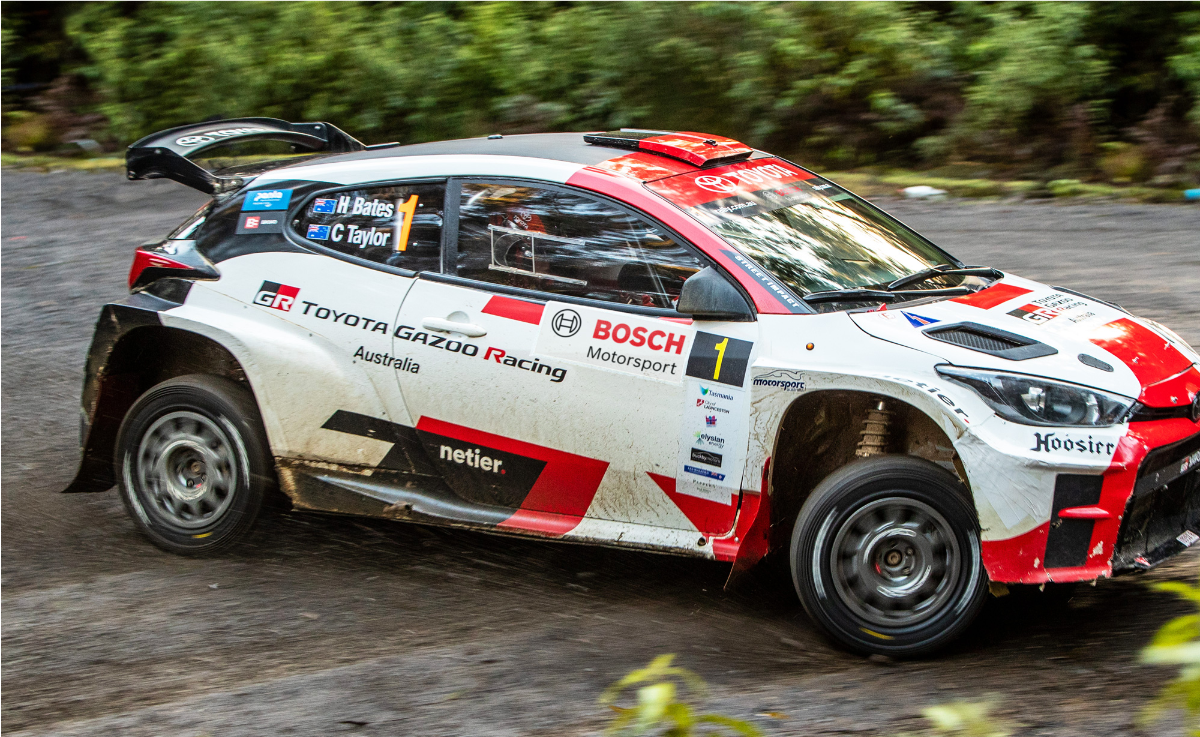
The 2023 Bosch Motorsport Australia Rally Championship begins in March. This year’s Motorsport Australia Rally Championship (ARC) will be proudly presented by Bosch Motorsport Australia as the new naming rights partner. The 2023 Bosch Motorsport Australia Rally Championship will begin with a bang in March, with the Buckby ŠKODA Rally Launceston now just over one month away. Bosch Motorsport is a division of the global Bosch Group, a leading supplier of technology and services worldwide. From weekend enthusiasts to Formula 1, Bosch has been providing advanced electronics, components and service for motorsport and high-performance applications internationally since 1901. Bosch is known for its historic innovations including the world’s first mass-produced electronic fuel injection control and more recent developments such as its award-winning Motorsport ABS system. Bosch Motorsport Australia also directly supports customers in Australia, New Zealand and South Africa. This won’t be the first time the Bosch brand has taken on the naming rights partnership for the ARC, with the 2011 and 2012 Championships supported by Bosch. Bosch Motorsport Australia’s Matt Turner said the new partnership was an exciting prospect for everyone involved. “We’ve all been watching the ARC very closely and have been excited with its growth, the number of competitors involved and the passion for rallying across the country,” Turner said. “To be able to take on the naming rights to the 2023 Bosch Motorsport Australia Rally Championship is a terrific opportunity for us to showcase our brand and connect with rally competitors, fans and volunteer officials alike." “We’re proud to supply our products to a number of existing competitors in the ARC and I’m sure many more competitors will also be able to benefit from our extensive product offerings, including fuel pumps, injectors and ECUs specifically designed for the tough conditions found in rallying.” Motorsport Australia CEO Eugene Arocca welcomed Bosch Motorsport Australia to the ARC family. “On behalf of everyone at Motorsport Australia, we extend our thanks to Matt and the Bosch Motorsport team for their support of the ARC this season,” Arocca said. “To have a quality brand such as Bosch Motorsport partnering with our thriving, premier rally Championship is a great boost for the discipline. “Bosch Motorsport’s wide range of products and support are known across the industry and held in the highest regard. We can’t wait to get the 2023 season started as they again extend their support to rallying. “I’d also like to thank RSEA Safety as the ARC’s previous naming rights partner from 2020 to 2022. RSEA stuck with the Championship through some difficult years during the pandemic and then of course were terrific partners during one of the biggest seasons in recent memory last year.” 2023 Bosch Motorsport Australia Rally Championship calendar: Round 1: Buckby ŠKODA Rally Launceston – 24-26 March Round 2: Make Smoking History Forest Rally – 19-21 May Round 3: Accent Benchtops Rally Queensland – 22-23 July Round 4: Middle of Everywhere Gippsland Rally – 25-27 August Round 5: Adelaide Hills Rally – 13-15 October Round 6: Netier National Capital Rally – 18-19 November Article originally published 22.02.2023 by Motorsport Australia .
Learn more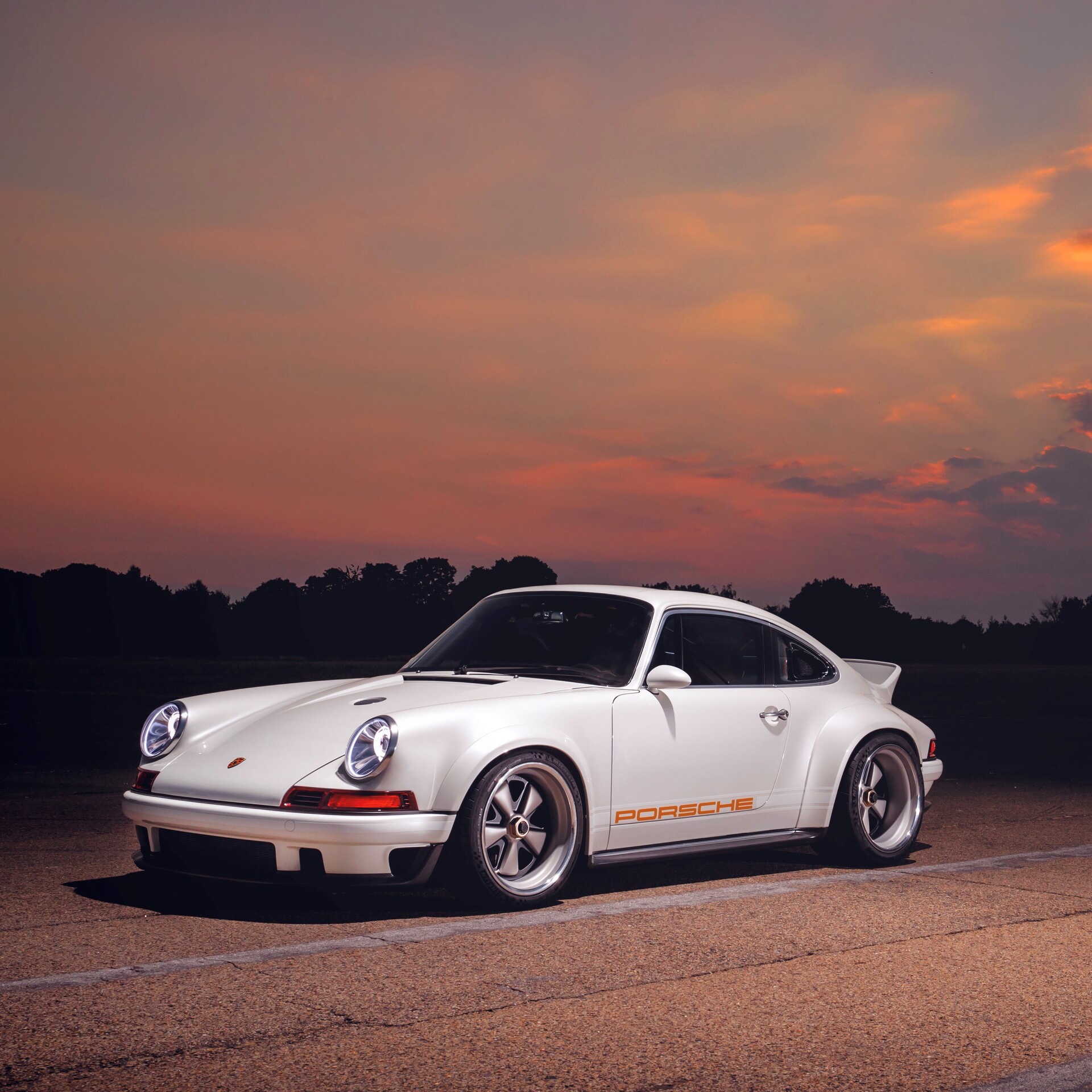
Singer Vehicle Design and Bosch Bring Modern Performance to the Air-Cooled Porsche 911 Singer and Williams Advanced Engineering pursued the most advanced air-cooled Porsche 911 in the world for their client Singer turned to Bosch to enhance performance through a modern ESP system The integration of Gen9 ESP from Bosch brings modern levels of safety and on-track performance – on par with supercars of the world FARMINGTON HILLS, Michigan – Imagine your favorite classic vehicle, but with modern performance. That is what Singer Vehicle Design has done with the 964-era Porsche 911 vehicles restored for their clients. A key aspect of bringing modern performance to these vehicles has been Bosch technology such as electronic stability control, also known as electronic stability program (ESP), and engineering expertise from the Bosch team. Singer revealed its newest client-inspired work, the Dynamics and Lightweighting Study (DLS), at the 2018 Goodwood Festival of Speed. DLS is a collaboration with Williams Advanced Engineering and a formation of technical partners, including Bosch, in pursuit of the most advanced air-cooled Porsche 911 in the world. The DLS was showcased as part of both a static display outside the Goodwood House and performed as part of the Michelin Supercar Paddock Hillclimb Run. The vehicle is on display for the first time publicly in the U.S. at Monterey Car Week beginning August 23. Additionally, the car will be displayed upon the famed concept lawn at the globally renowned Pebble Beach Concours d’Elegance on Sunday, August 26. Original 964-era Porsche 911s came equipped with a Bosch ABS 2U system, which Singer currently restores for their Classic Commissions. For the DLS, however, Singer desired a new level of technology and refinement and turned to Bosch. “It’s really important for us that the addition of these systems shouldn’t spoil the driving experience, and still allow the driver to explore the dynamic limits of the vehicle, with varying levels of driver-selected assistance,” said Mazen Fawaz, Managing Director at Singer Vehicle Design. “We’re delighted with the way that the Bosch team have been able to work with us to develop the system to deliver the level of performance in the way that we always intended. We’ve created something together that we think is really quite special.” The engineering team at Bosch focused on integrating a modern ESP system to provide not only safety, but also high-level racetrack performance. Singer, Williams and Bosch worked together to ensure that the sensors and communication architecture necessary for modern ESP controls were integrated into the custom design of the vehicle from the beginning. “Singer’s meticulous level of detail in all facets of their work aligned well with our Invented for Life vision of developing technology that provides benefit – in this case through improved safety and performance,” said Keith Andrews, regional president of Bosch Engineering Group in North America. “Our team embraced the challenge to integrate the ESP in a modern fashion while respecting the heritage.” The Bosch Engineering Group team in North America has spent the past 10 years refining a Brake Controls solution optimized for racetrack driving. Multiple sports car programs and thousands of hours later; Singer is tapping into this experience and expertise. “When we were planning the Dynamics and Lightweighting Study, coming to Bosch for the ABS, traction control & ESP system was a natural choice for us,” Fawaz said. “From an early stage of discussions, it was obvious that the team there were really enthusiastic and understood the character that we are trying to give to the vehicle.” Article originally published 24.08.2018 by Bosch US .
Learn more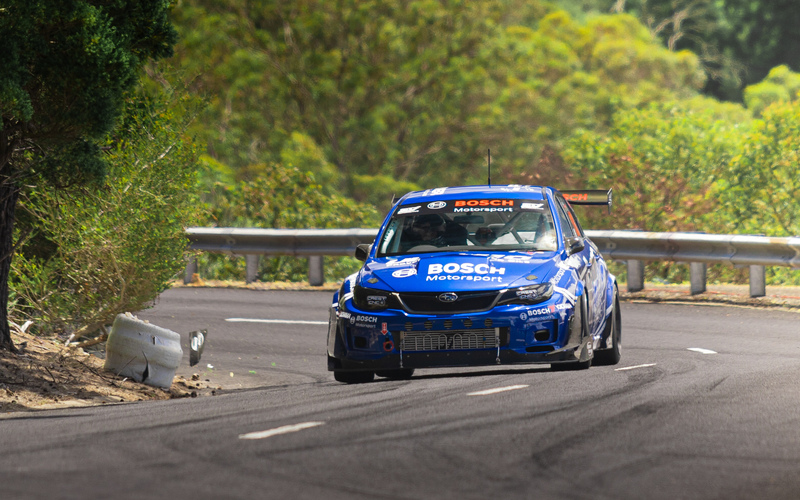
Dan Day has secured the title of 'Legend of The Lakes' for the 7th time at the latest running of the spectacular hillclimb located in the picturesque Mount Gambier Volcanic Complex. Variable weather and early pace from Victoria's Kevin Mackrell threatened to spoil the reigning champ's weekend while the S&J Automotive team tried to troubleshoot a gearbox issue in the 800hp Subaru WRX. The sun fought through to heat the tarmac on Sunday afternoon, and Dan pushed through the gearshift issues to exactly match his unbeaten 2017 record - a 49.89. The next run, one hundreth of a second was shaved and a new record was set. Dan returned to the start line for a final run in the Bosch Motorsport Australia Top 10 Shootout and put it all on the line - cracking off a 49.45 second pass to secure the win and leave no doubt in his dominance of the hill. Dan credits the Bosch Motorsport ABS system with allowing him to find crucial milliseconds on the challenging 1.4km road course "I have optimised most areas of the hillclimb and with the current power level we are traction limited, meaning most time is to be found in the braking zones". "During the weekend as we found more grip and switched to slicks, I dialed in the ABS setting to where I was comfortable and was able to brake about fifteen metres deeper into the key braking zone before the hairpin. Since this is the highest speed section of the track, that fifteen metres is worth a big chunk of time". Bosch Motorsport Australia is a proud partner of the South Eastern Automobile Club for this event. Please enjoy our photo album from the 2022 running of the Trident Tyre Centre Legend of The Lakes.
Learn moreBosch Motorsport is a division of the global Bosch Group, a leading supplier of technology and services worldwide. From weekend enthusiast to Formula 1, Bosch has been providing advanced electronics, components and service for motorsport and high performance applications internationally since 1901. Worldwide experience and race proven technology backed by local support is in your race car when you use Bosch Motorsport components.
Bosch Motorsport Australia directly supports Australia, New Zealand and South Africa. Head to our Authorised Dealers & Retailers page to find out more.

Every Bosch Motorsport product has quality built-in. The same high-performance products tested in the highest levels of international motorsport are available for your car.

We know what makes the difference between the top two steps of the podium - and have for generations.

Passion for technology, continuous improvement and the success of our customers.